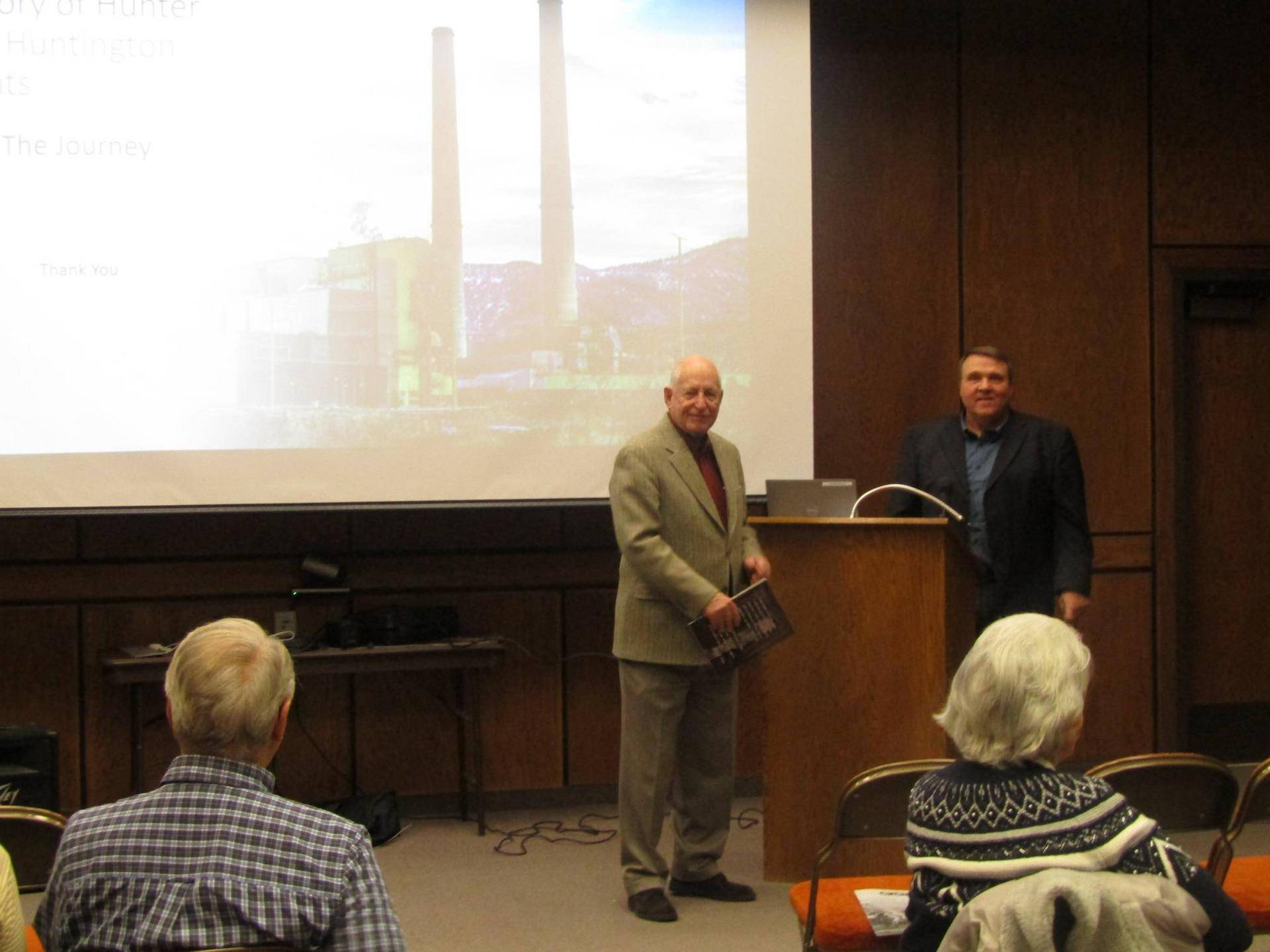By Julie Johansen
Laren Huntsman, Managing Director of the Hunter and Huntington Power Plants, presented the history of both plants at the Emery Historical Society meeting on Thursday evening. His presentation was entitled “The Journey.”
A slideshow presentation with his narration traced the arrival of electricity to Utah and eventually Emery County. Huntsman reported there was no electrification in rural Utah until after the turn of the century; however, many small, inefficient plants resulted in a maze of power poles and lines in Salt Lake in 1889.
In 1900, hydroelectric plants brought electricity to about 20 communities in nine out of 27 counties in Utah. Huntington was the first community in this area to have electricity when an ordinance in 1907 recorded by the Emery County Progress stated that C.L. Allen was thinking about electricity.
Utah Power and Light was then formed in 1912 and purchased several small companies, providing more stable electric systems for customers. The Great Depression slowed the expansion of electricity, but World War II reignited production to meet the demands of defense. A new phase of electric power generation began between 1945 and 1954 and the output doubled.
In 1963, three new power plants in Utah opened, including Gadsby in Salt Lake City, Hale Plant in Provo Canyon and the Carbon Plant at the mouth of Price Canyon. In 1984, customer numbers doubled and only about 5% of electricity came from hydro power.
Construction began on the Huntington Plant in 1971 with about 1,200 construction workers, mainly from outside of the area. It was commissioned to begin producing in 1974. Meanwhile, the Hunter Plant started construction in 1975. Unit #1 was commissioned in 1978 with Unit #2 in 1980 and Unit #3 in 1983.
The plants are important to Emery County as they employ over 300 people, with a support group of 7:1. PacifiCorp also pays about 2/3 of Emery County’s property taxes with funding going to schools and infrastructure.
Huntsman also pointed out the main reasons why Emery County was chosen for plant sites. The reasons included the quality of employees available, reliability with longevity, the land, water and coal, and transmission lines from generation to the populated areas.
“PacifiCorp is a good citizen to Emery County and Emery County is a good citizen to PacifiCorp,” Huntsman said.
Huntsman concluded with some of the challenges facing both plants at the present time. They include regulatory mandates, which are very costly, but PacifiCorp is compliant with every regulation. Other challenges are uninformed public opinions, new technology advancements and the increase in cost to operate.
To conclude, Emery County Historical Society President Edward Geary thanked Huntsman for the informative presentation and assured him of the county’s need and appreciation for PacifiCorp.

